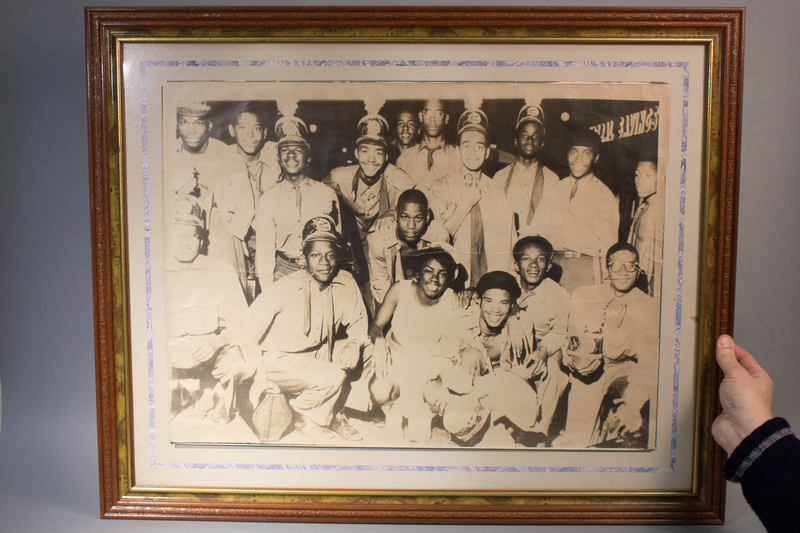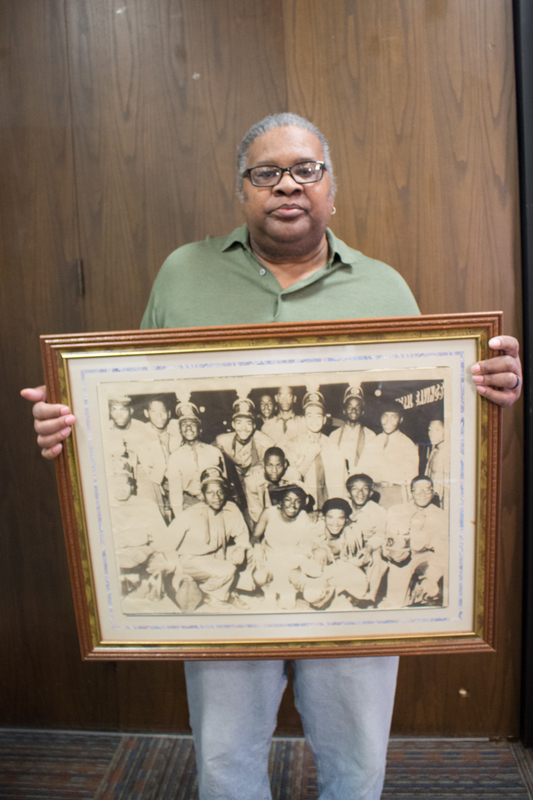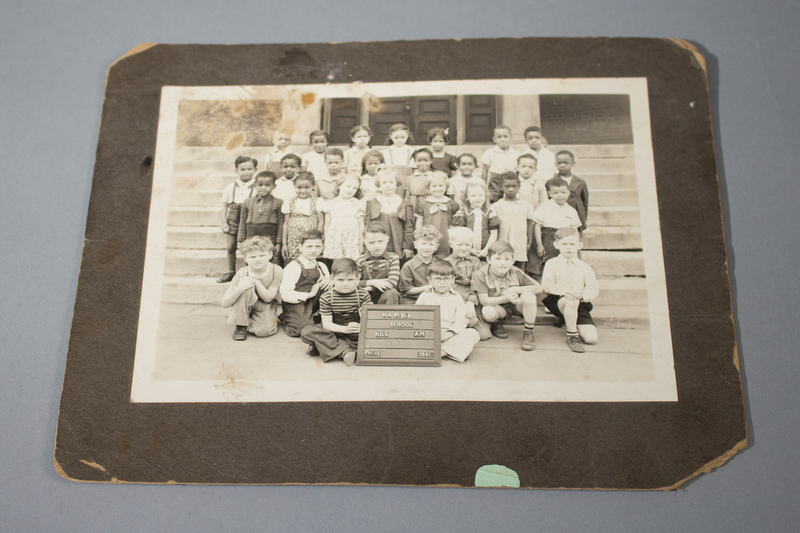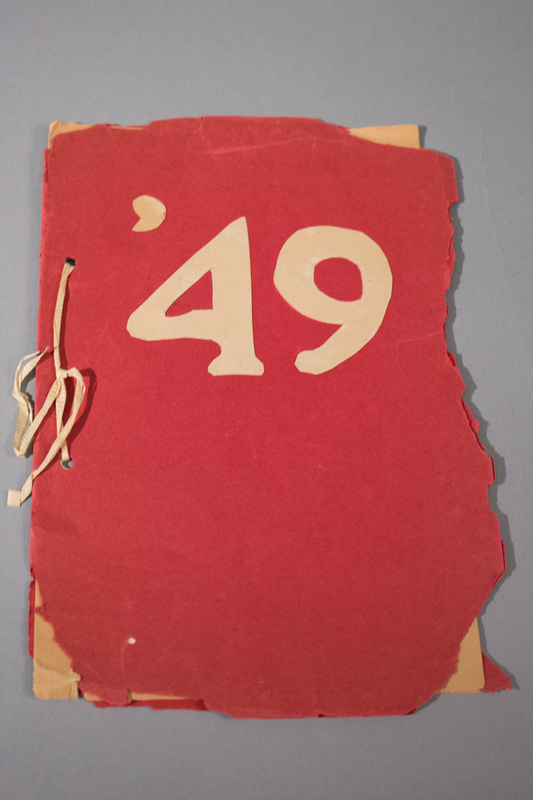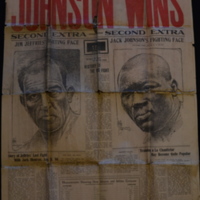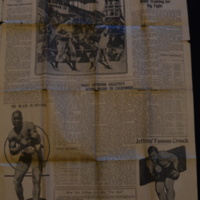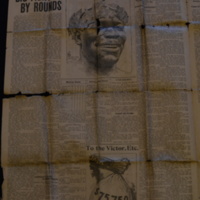"Everything is Education:" Formal & Informal Schooling
Education, according to the Oxford English Dictionary (OED), is defined first and foremost as “the process of receiving or giving systematic instruction, especially at a school or university.”(1) However, while this definition of education is regarded by Oxford University’s English language experts to be the primary one, for the purposes of this exhibit, the OED’s second definition is equally as important, if not more fitting. In fact, this second OED definition of education disregards the formal, western-oriented restriction of the “systematic instruction” to which the first alludes, and instead states broadly and inclusively that education can simply be “an enlightening experience.”(2) It therefore aligns more closely with the way in which Old Rondo resident Dr. Mary Boyd defined it in a 2005 interview, when she asserted boldly that education was not limited to classroom instruction, but rather that it was everywhere; that “[life is] all education.”(3)
Dr. Mary Boyd’s powerful reclamation of the term ‘education’ as a process that can occur outside of the colonized American classroom, and that can be centered in performances of cultures deviant to that of the oppressor relates directly to Mr. Lester O. Myles’ ca. 1960 black and white still photograph of the Gopher Elks Drum Corps. According to Mr. Myles, the practices of the Gopher Elks Drum Corps, in which he performed, attracted “everybody from Lexington to Virginia Street, from Selby to University,” and indeed, “even people from the bar would come out and listen.”(4) Because the weekly practices of the Gopher Elks Drum Corps functioned as both a vehicle for community cohesion and an enriching experience for the neighborhood, the performances seem to have been in many ways a form of informal education, as explained by Dr. Boyd and the second OED definition.
Ms. Jacque “Peaches” Polk’s 1941 photo of the AM Kindergarten class at the Maxfield School, on the other hand, seems to speak more to the first OED definition of education: Students, many of whom appear to be dressed up--perhaps in their Sunday Best--are neatly organized into rows, and are posed on the steps of their school. The number of children in the photograph who would be considered white by contemporary American standards, but not necessarily by those of 1941, echoes what Playwright Josh Wilder’s depiction of Frank Marzitelli relays in The Highwaymen. The character of Frank Marzitelli, as performed by Twin Cities actor E.J. Subkoviak, conveys that in the early twentieth century, many European immigrants were not considered to be white, particularly prior to their mass assimilation into the culture of American society. Evelyn Fairbanks also speaks to this phenomenon indirectly in the sixteenth chapter of the Minnesota Historical Society’s 1990 publication The Days of Rondo, when she asserts that “my neighborhood also had Swedish Lutherans, Irish Catholics, and Russian Jewish people…[who] ‘liked’ each other, ignoring race.”(5) However, even the slightest further examination of the photo seems to reveal a somewhat contradictory phenomenon: The students appear to have been organized in accordance with traditional American race and gender standards. White boys sit at the front, followed by standing rows of white girls, black boys, and black girls. Schooling, in the case of this photo, seems to have functioned, in part, as a means through which to imbue upon developing minds traditional hegemonic agendas of 1940s public education.
Ms. Polk’s second item from the 2016 History Harvest, a 1949 commencement program from St. Agnes Grade School, seems to speak directly to the community cohesion brought about by schooling institutions. The careful construction of the program suggests that it was assembled by hand, perhaps by both school faculty and members of the community, which corresponds directly to what we learned about Old Rondo’s commitment to education as a community endeavor. While Ms. Polk did not address these aspects of her artifact directly, she did relay that education was highly integral to the social bonds within her community. In her own words, she stated that “you’d go to school, and your mother would know everything you’d done on the way home,” creatively illustrating the collaboration that existed between formal schooling institutions and the social networks of Old Rondo.(6)
Another item that stands out from the 2017 History Harvest is the Jack Johnson boxing match newspaper article. Because local newspapers like the Saint Paul Daily News respond to the culture of a community, and can function as a venue for mass communication, they are in many ways a form of informal education. Indeed, the rhetoric of the article seems to be another medium through which culture could be practiced within the Old Rondo community. In the bottom right-hand corner of the front page spread, a small box in particular seems to illustrate the somewhat hybrid form of both informal and formal education that this article provides: This brief, boxed-off subsection, entitled “Aggressiveness,” quite literally provides a formal form of education to its readers by defining the noun ‘aggressiveness’ in a traditional structure.(7) However, while this subsection maintains the customary dictionary practice of including both a term and an explanation, it is also an exemplification of informal education because the rhetoric employed within the definition itself is colloquial in nature. Indeed, through such phrases as “slipping a hard one” and “put the other away,” the definition relies upon readers’ knowledge and understanding of culturally, temporally, and geographically specific language practices so as to even begin to understand the central term, ‘aggressiveness.’(8) There are many more examples of similar such definitions within this very newspaper, but all of these explanations serve to further illustrate venues of education that can be considered alternatives to formal schooling, and are thus forms of informal education.
Footnotes
- OED Online. “Education, n.1." Oxford University Press, September 2016. Web. 30 March 2017.
- Ibid; OED Online. “Education, n.2." Oxford University Press, September 2016. Web. 30 March 2017.
- Cavett, Kate. Voices of Rondo: Oral Histories of Saint Paul's Historic Black Community. Syren Book Company, (2005): Saint Paul, MN. 207.
- Myles, Lester O. “Gopher Elks Drum Corps,” Remembering Rondo | A History Harvest. Web. 30 March 2017.
- Fairbanks, The Days of Rondo. 150.
- Polk, Jacque Peaches.“St. Agnes Grade School commencement program,” Remembering Rondo | A History Harvest. Web. 30 March 2017.
- “Jack Johnson Boxing Match Newspaper Article,” Remembering Rondo | A History Harvest, accessed April 21, 2017, http://omeka.macalester.edu/rondo/items/show/84.
- Ibid.
